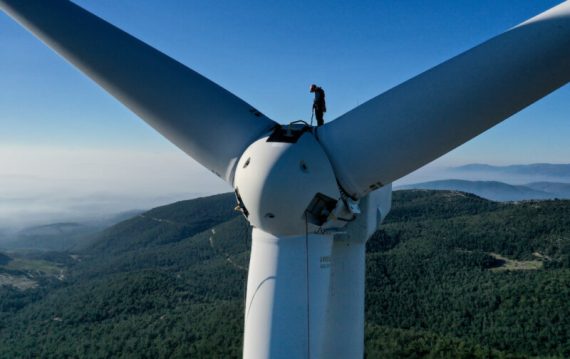E
nergy has long been used as a foreign policy tool in states’ engagements with one another. First coal, then oil and natural gas, have been used to create tension or collaborations between governments. These resources enabled few countries to become energy producers and exporters on rare occasions, while all remaining countries were forced to be import dependent, and to indigenously use renewable energy resources joined by dominantly used fossil fuels.
Although green energy technologies are not new to our lives, rising concerns over accelerating climate change have pushed clean technology further in recent years. What is more, the Ukraine war has reminded us of the significance of indigenous energy resources and mines.
Clean energy: Tool developed for decreasing import dependency?
The clean technology movement was first driven by developed countries to decrease their energy import dependency and secure their energy supply. The oil crisis of the 1970s showed that governments and outside actors can intervene in the markets, and the United States and its Western allies began to search for alternative energy supplies other than those imported.
Thus, especially after 1990, the share of renewables in global electricity generation began to rise. More specifically, renewables share was 2,200 TWh in 1990 and increased to almost 7,000 TWh in 2020. Germany, for instance, is among the first countries that invested in renewable energy technologies, and among the first to manufacture solar panels and wind turbines.
German companies are still listed among the major players in clean energy technologies, and invest worldwide to preserve their market share and competitiveness. Yet, some domestic manufacturers went bankrupt because of the federal government’s overly ambitious goals and liberal market solutions.
As the German government pushed hard to increase solar power installations by implementing “Energiewende,” its green energy transition policy to phase out nuclear power, and coal power, by incentivizing foreign companies to take an active part in the domestic energy market, German solar panel manufacturers were not able to compete with foreign companies, mainly Chinese solar technology producers.
This almost spelled the end of several German panel producers at the expense of renewable energy power capacity. Today, cheaply produced Chinese solar panels feature across the European continent.
European countries, including Germany, changed the destiny of their legendary car industries, too. Thus, governments planned to ban the selling of combustion-engine cars, for instance, Norway starting in 2025 and, the Netherlands and Germany in 2030, to lower emissions arising from European roads. However, there was not an overwhelming demand for electric vehicles, and imports of electric vehicles began to rise.
Since their Asian counterparts, especially Chinese and Indians, produce at lower costs, and manufacturers like BMW, Mercedes-Benz, and Audi seem unable to respond to this price challenge, the Chinese market share especially is expected to rise from less than 5 percent to more than 15 percent by 2025.
Tough competition from emerging economies
In the 2010s, developing countries, or emerging economies as they are also known, have taken over the leadership of clean energy technologies. Although Germany, Spain, Australia, and Japan were the main donors in public investments in renewable energy in 2000, Brazil and China invested the most in 2009, and China alone was responsible for almost one-third of the global renewable energy investment in 2017.
Between 2000 and 2022, China was behind 21 percent of public investments in renewables globally. This is a very good example of how a country can market its projects as a foreign policy tool promising sustainable growth and development. The Belt and Road Initiative (BRI), for instance, is one of the biggest and most controversial projects of the last century.
China has marketed the BRI as a vision to bring progress and enhancement to those engaged in the initiative. Since its launch in 2013, a number of Chinese state-owned firms and private companies have been operating in Africa, Latin America, and elsewhere, with energy-related projects constituting the largest share. Although Chinese firms are more prone to engage in fossil fuel projects, renewable energy also has a considerable share.
Only in 2022, Chinese firms’ engagement in BRI energy projects reached $24.1 billion, which was the lowest since 2013, when green energy constituted about 11 percent.
Metals and mining projects are also of strategic importance for the BRI as they were at the heart of transition to green energy and achieving net-zero emissions. The key role played by raw materials in solar and wind power generation, battery production, electric vehicles, and in fact the whole renewable technologies sector escalated competition between countries, and China, in the last decade, again became the number one investor.
A just energy transition for all?
Yet, there are cases where the “developed West” wants the developing or underdeveloped world to keep its natural resources underground while it continues to use its resources. At annually held COP conferences, policymakers from advanced economies complain about how they still finance polluting fossil fuels. Norway, for instance, as the world’s fourth largest natural gas exporter, lobbied at COP26 to stop financing fossil fuel development projects by 2025 unless exceptional circumstances are present.
The world’s leading oil and gas producer, the United States, and one of the top fossil fuel consumers, the EU, are also urging underdeveloped and developing countries to stop burning coal and share the burden of climate change adaptation and mitigation while suggesting the World Bank finance clean tech applications, such as hydrogen production.
Anyone familiar with the energy sector knows that today, no single economy can survive without some baseload power generation like gas or coal-fired thermal plants, or nuclear power plants. Besides, natural gas is also one of the cleanest means to heat homes, cook meals, and run heavy industries. Thus, burning coal and gas is indispensable to economic growth as energy consumption is one of the indicators of economic development.
Recommended
Import or do not grow
Halting finance flows to oil and gas production projects in the developing or underdeveloped world is a soft way of saying “import or do not grow.” This could push countries to collaborate with China which has already jumped into their economies.
Moreover, recent data show that despite the promises and the immense need for climate change adaptation and mitigation measures, international public finance still flows to initiatives that harm the climate. It is also led by advanced economies of developing countries in support of clean energy, which is decreasing since 2019.
The level of financing remains well below what is needed in the most vulnerable and least developed countries like Sub-Saharan Africa, Latin America, and the Caribbean. Plus, it is worth remembering that those who push hard to stop burning coal, cut fossil fuel subsidies, and invest more in net-zero scenarios are the ones who have caused the most pollution and whose shares in historical greenhouse gas emissions are the largest.
The situation today forces the developing and underdeveloped world to choose between being part of green colonialism or not developing. What will they choose?





